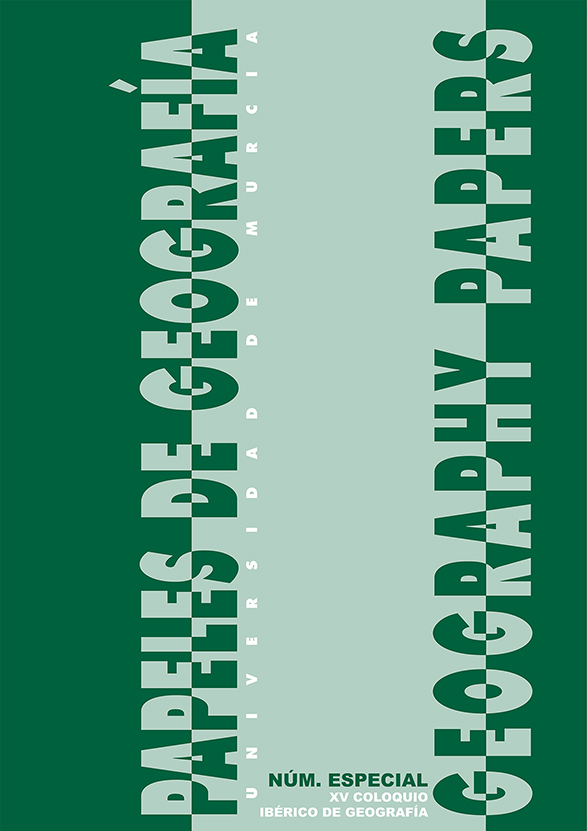Technology and market type indicators for wine protected designations of origin
Abstract
Both type of technology and type of market that characterizes each Wine Protected Designation of Origin (PDO) can be identified through different elements. Using as a frame of reference the theory of production worlds, the type of technology can be characterized as specialized or standardized, considering aspects related to the degree of generalization of knowledge and the level of automation. The type of market can be characterized as generic or dedicated, taking the predictability of demand, the size of the target market and the level of customization of production. In order to identify these dimensions in the wine sector has been proposed a battery of indicators and their usefulness has been analyzed to select the most suitable. The area per winery, conceived as the interaction between the average size of the vineyard and the number of wine growers per winery, offers a high potential in the definition of the type of technology axis. On the other hand, the type of market can be characterized using the average size of the wine brand, as an indicator of production segmentation.Downloads
References
ADINOLFI, F., DE ROSA, M. y TRABALZI, F. (2011): British Food Journal. “Dedicated and generic marketing strategies: The disconnection between geographical indications and consumer behavior in Italy”, 113, 419-435.
BARCO ROYO, E. y NAVARRO PÉREZ, M. C. (2005): Zubía. “Transformación y cambio estructural en la D.O.Ca. Rioja (1983-2005)”, 17, 121-138.
BARCO ROYO, E., NAVARRO PÉREZ, M. C. y PINILLOS GARCÍA, M. D. (2007). Conocimiento, innovación y emprendedores: Camino al futuro. “Estrategias de diferenciación versus estrategias de tamaño. El caso de la DOCa Rioja”. En J. C. Ayala Calvo. Universidad de La Rioja.
BLÁZQUEZ MARTÍNEZ, J.M. (1998): Hispania: el legado de Roma, en el año de Trajano “Los productos de la tierra en Hispania”. En La Lonja-Zaragoza. pp. 95-102
BURILLO MOZOTA, F. (2010): Sagvntvm extra. “La vid y el vino en el valle medio del Ebro durante la etapa prerromana”, 9, 135-150.
CLIMENT LOPEZ, E. y SANCHEZ HERNANDEZ, J. L. (2015): Géographie, Économie, Société. “La théorie des conventions en géographie économique : Un éclairage apporté par l’application à l’industrie espagnole du vin”, 17, 25-47.
ESCALONA ORCAO, A. I., LOSCERTALES PALOMAR, B. y CLIMENT LÓPEZ, E. (2013): Boletín de la Asociación de Geógrafos Españoles. “Enfoques, experiencias y propuestas para la mejora de la competitividad territorial de las áreas vitivinícolas: Las denominaciones de origen protegidas de la provincia de Zaragoza”, 62, 317-341.
ESTEBAN RODRÍGUEZ, S. y CLIMENT LÓPEZ, E. (2015): Análisis espacial y representación geográfica: innovación y aplicación. “Los ‘mundos de producción’ del vino en España: un enfoque cuantitativo aplicado a las denominaciones de origen protegidas”. En de la Riva, J., Ibarra, P., Montorio, R., Rodriguez, M. (eds.). Zaragoza, Universidad de Zaragoza-AGE, 1995-2004.
ESTEBAN RODRÍGUEZ, S. (2016): Las Denominaciones de Origen Protegidas del sector del vino en España: Análisis comparativo desde la teoría de los mundos de producción. Prensas de la Universidad de Zaragoza, Zaragoza. 458 pp.
MAGRAMA (2016): Datos de las Denominaciones de Origen Protegidas de vinos (DOPs), campaña 2014/2015. Ministerio de Agricultura, Alimentación y Medio Ambiente, Secretaría General Técnica, Centro de Publicaciones. Madrid. 55 pp.
MARTÍNEZ CARRIÓN, J. y MEDINA ALBADALEJO, F. (2013): Revista de Historia Industrial. “La competitividad internacional de la industria vinícola española durante la globalización del vino”, 22, 139-174
MURDOCH, J. y MIELE, M. (1999): Sociologia Ruralis. “Back to nature: Changing ‘worlds of production’ in the food sector”, 39, 465–483.
MURDOCH, J., MARSDEN, T. Y BANKS, J. (2000): Economic Geography. “Quality, nature and embeddedness: some theoretical considerations in the context of the food sector”, 76, 107-125.
QUESADA SANZ, F. (1994): Verdolay: Revista del Museo Arqueológico de Murcia. “Vino, aristócratas, tumbas y guerreros en la cultura ibérica (ss. V-II a.C.)”, 6, 99-124.
RODRÍGUEZ DOMENECH, C. (2007): Cuadernos de Estudios Manchegos. "La denominación de origen Valdepeñas en el último tercio del s. XX. Aspectos económicos", 31, 267-296.
RUIZ PULPÓN, Á. R. (2013): Boletín de la Asociación de Geógrafos Españoles. “El viñedo en espaldera: nueva realidad en los paisajes vitivinícolas de Castilla-La Mancha”, 63, 249-270.
SALAIS, R. y STORPER, M. (1992): Cambridge Journal of Economics. “The four ‘Worlds’ of Contemporary Industry”, 16, 169-193.
SALAZAR TERREROS, I. y GALVE GÓRRIZ, C. (2011): Ekonomiaz: Revista Vasca de Economía. “Análisis de la organización interna de la industria: Una aplicación a la industria vitivinícola en la Denominación de Origen Calificada Rioja”, 77, 280-300.
SÁNCHEZ HERNÁNDEZ, J., APARICIO AMADOR, J. y ALONSO SANTOS, J. (2010): Geoforum. “The Shift between Worlds of Production as an Innovative Process in the Wine Industry in Castile and Leon, Spain”, 41, 469–478.
STRÆTE, E. P. (2004): European Urban and Regional Studies. “Innovation and changing ‘worlds of production’. Case-studies of Norwegian dairies”, 11, 227-241.
The manuscripts published in Papeles de Geografía are subject to the following terms and conditions:
1. The publishing house of the University of Murcia (Servicio de Publicaciones de la Universidad de Murcia) keeps the copyright of the published manuscripts favouring and allowing the use and distribution of such works under the licence in 2 below.
© Servicio de Publicaciones, Universidad de Murcia, 2011
2. Manuscripts are published electronically under an Attribution Non-Commercial No Derivatives 3.0 Unported Creative Commons Licence Spain (Legal text). Readers are free to copy, use, share and redistribute the material in any medium or format as long as (i) appropriate credit is given to authors and original source (journal, publishing house and URL); (ii) the material is not used for commercial purposes and (iii) this licence and restrictions are stated.
3. Self-archive. Authors are allowed and encouraged to distribute pre-print versions (prior to evaluation) and/or post-print versions (after evaluation and accepted for publication) of their manuscripts. This favours the dissemination and early distribution of scientific knowledge and citing.






